
© Copyright Goldendoodles.com 2001. All rights reserved. You may not copy or otherwise use anything on this site without our written permission.
Made with Xara
.


Goldendoodles.com
Holiday Puppies: If you must . . .
by Stacy Greer with Adventures in Canine Training, Inc.
The holidays are near. The smells outside make you think of childhood memories of Christmas cheer and family gatherings—the food, the gifts the joy. This year you have decided to add a new joy to your family. You want something that will make the kids smile and leave the impression of the best gift they get this Christmas—a new puppy! You can read many articles that strongly emphasize the reasons for not making this decision. They tell you why Christmas is not the right time to get a puppy and may even have a long bulleted list on advantages vs. disadvantages or sad stories that try to persuade you to agree with their reasons. However, what happens if you know for certain that you are a good parent—to human or animal—and your mind is set—there will in fact be a new furry family member this holiday season in your home! If you have decided to make the choice to add a furry member to your home this holiday season then let me suggest things you should not fail to do so that you will in fact have a wonderful holiday, and more importantly the new puppy will acclimate and transition well into your bustling, busy home during this time. Motley on ice Puppies are much like children—they require constant supervision for the first part of their lives, they need rules, boundaries, vaccinations, high-quality nutrition and most of all proper rearing and training. Without these things you can find yourself becoming frustrated and you can also find this to be the reason why many animals end up in shelters. It is really just a lack of education, which is 100% preventable. While these things apply to puppies no matter when you acquire them, there are several things you must do differently if you are adding a puppy to your family during the busy time of year around Christmas. First, you must plan ahead. You’ve already planned to get the puppy now you need to take the appropriate steps to make the whole process successful and stress-free as possible. You will need to have the proper things for the puppy ready when you bring him/her home. (* for more shopping tips) • Proper sized crate—wire or plastic • Several chew toys—Nylabones, rawhides, sterilized bones • Play toys—ball, squeaky toy, stuffed toy (these are never left for puppy to have alone) • Bowls—stainless steel • Kong®—used for feeding • Properly fitting nylon collar • 6-foot leash • High-quality food (ask us for recommendations!) • Bedding • Old sheet to cover crate (we’ll explain this below) PREPARING THE CRATE Once you have the items listed above you want to set up the proper location for the puppy’s new home, i.e., the crate. Find a place that is out of the way and not overly isolated but not in a high traffic area. A laundry room can be good or even the master bedroom. Be sure that the crate isn’t too big. Your puppy should be able to lie down comfortably and turn around in the crate. Usually a rule of thumb is measure your dog from head to tail and add 2-4 inches for the appropriate length. You may place a padded bed or blanket in the crate if you wish. (You must watch for the puppy using the soft bedding to soil on—if this occurs you’ll need to remove the soft bedding until the puppy is further along in his potty training.) If possible place some bedding that has the scent of the puppy’s mother and/or littermates on it. You may use a crate cover or something to cover the crate for when things get rowdy to shut out the rest of the world. Often this helps the puppy relax much quicker. Some puppies do not like the crate to be covered so you will need to find out if your puppy relaxes better with or without a cover. Now that you have the crate set up get a bucket to place the toys in. You should keep any stuffed toys, balls, ropes or latex toys put away. These types of toys only come out when you want to play with the puppy. This helps the puppy keep interest in his toys. If they are lying around all the time the puppy may lose interest. You may leave Nylabones, sterilized bones and rawhides out as you wish—these are chew items, not toys. Once you have those items all ready and set up we should discuss what to do during the busy times of the holiday season. HANDLING & PLAY-TIME When you have a house-full allow your puppy to receive attention but do not allow him to be handled and played with for more than 15-20 minutes at a time. Much more than that will over- stimulate your puppy and he may show tiredness by using his teeth to nip hands, clothes and other things. He may also have a harder time settling down if he’s too over-stimulated. When he is out with guests he needs to be supervised and play is best. Toss a ball to him, allow him to play with a tug rope—anything that involves interaction with a human and the puppy. Do not allow your puppy to be left to his own devices for any amount of time. Often children will play with the puppy and grow bored. The children may leave the room and the puppy alone in the room—not a safe situation! Never allow children to be with the puppy alone or without an adult to supervise. Also, because children can be overly exuberant it is advisable to have the puppy out for only 10 minutes at a time with children around. When play time is over or it is time to put the puppy away to relax, first take him out to go potty and then place him in his crate for much needed relaxation and a nap. Remember a puppy is like a baby— they require a lot of sleep. Although they are like babies they have the mentality of a preschooler. This means that they will not usually put themselves to sleep and will show signs of tiredness by acting out. If your puppy becomes boisterous or nippy most likely the culprit is over-stimulation. This means you need give the puppy more nap times and less time out with guests. OVER-STIMULATION All interactions should be short and end with crate-time, i.e., forced relaxation in his crate in the other room, away from all guests. The puppy may seem to be in his crate quite a bit but allowing him to romp about and be in the middle of things can end up being quite disastrous. The puppy could get stepped on, left to his own devices and learn all kinds of bad habits. With a house full of guests there is sure to not be enough time for the puppy to be constantly supervised, so following this routine will ensure the puppy’s well-being and safety. Keep in mind that a puppy that is overly doted on or in the middle of more than 4 or 5 people for long amounts of time can cause a lot of stress and possible behavior problems later. This could include fear or aggression towards people when over- stimulated at any other time in his life. People always hear about socialization for puppies but there is such a thing as taking it too far. All socialization should be in small bursts—15 minutes at a time and all interactions should be very, very positive and/or fun. Then it must be followed by crate time for at least an hour. FEEDING On another note, feeding should be looked at carefully. Make sure that during the holidays when the house is full of guests that feeding is done in a room away from all the activities and guests. Feed the puppy on a schedule; do not allow food to be available at all times. It is advised that you feed the puppy in his crate. This will help him to really enjoy his crate and also keep him away from busy life and he can finish his food as he needs to. We like to have puppies fed from a toy as opposed to a bowl for the first few weeks. A good toy is a Kong®. Feeding from toys makes feeding a bit of a challenge for the puppy and promotes mental stimulation. Mental stimulation helps tire out a puppy. An equal amount of mental and physical stimulation keeps any dog balanced, relaxed and happy! GUESTS Be sure that you watch your guests with your puppy. They need to follow and respect your rules and the schedule you have with your puppy. Do not allow guests to do any of the following with your puppy at anytime: • Rough-housing for play—play needs to be with toys not hands! • Allowing the puppy to nip or bite at their hands • Pushing the puppy away if he does nip/bite, they should put the puppy away if he begins this behavior—immediately. • Wonder around on his own or be unsupervised at any time Do ask that your guests abide by the following rules: • Pet the puppy gently and keep him calm • When engaged in play the only thing puppy has in his mouth is an appropriate toy • Put the puppy away no matter what after a maximum of 20 minutes (after he has been taken for a potty break) • Never leave the puppy with children of any age If you cannot follow the above plan during the busy holiday season it is advised that you do re-think bringing a puppy home during the holidays. However, this plan is quite simple and easy to follow as long as you maintain it until all guests are gone. If you can follow this plan during the holidays, or even in daily life, you are sure to raise a happy, well-adjusted, stress-free puppy! We recommend that, as soon as possible, you find a qualified trainer to come into your home and help you with raising and training your puppy so that you have a well-mannered and wonderful family member for years to come! Have a safe, happy holiday season! brought to you by Adventures in Canine Training, Inc. www.adventuresincaninetraining.com Dallas/Fort Worth, Texas
Adventures in Canine Training, Inc.
The information contained on this site is in no way intended to replace that of proper veterinary advice, diagnosis or treatment.
It is meant to provide resource, so that we can better understand canine health related issues.
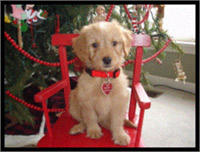

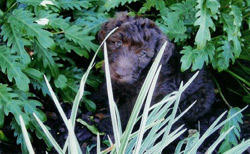
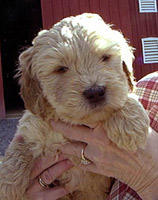
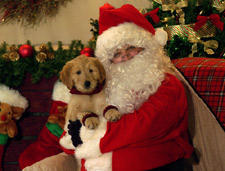
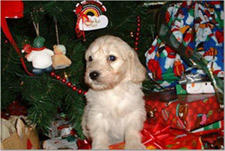


© Copyright Goldendoodles.com 2001. All rights reserved. You may not
copy or otherwise use anything on this site without our written permission
Made with Xara
.


Adventures in Canine Training, Inc.
The information contained on this site is in no way intended to
replace that of proper veterinary advice, diagnosis or treatment.
It is meant to provide resource, so that we can better understand
canine health related issues.











